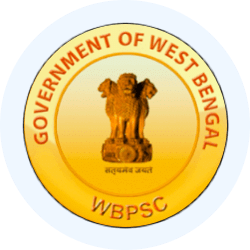WBCS (West Bengal) Exam > WBCS (West Bengal) Notes > WBCS Preparation: All Subjects > West Bengal Public Finance and fiscal Policy
West Bengal Public Finance and fiscal Policy | WBCS Preparation: All Subjects - WBCS (West Bengal) PDF Download
- The financial condition of the West Bengal government is the most precarious among the five highly-indebted states in India. The total debt burden of the province is nearly two lakh crores, translating to a per capita debt of over twenty thousand rupees for each citizen, as reported by The Times of India on May 30, 2011. This is an alarming figure.
- Among the five highly-indebted states, namely Uttar Pradesh, Maharashtra, West Bengal, Andhra Pradesh, and Gujarat, West Bengal has the highest revenue deficit. For the fiscal year 2009-10, the state's revenue deficit, representing the difference between revenue earnings and expenditures, stood at a staggering Rs 17,940 crore, in contrast to Maharashtra's Rs 7,123 crore.
- West Bengal's performance across various parameters is notably poor compared to larger states, and it fares even worse than some economically backward states. The evident financial distress of the West Bengal government is underscored by these statistics, highlighting the need to delve deeper into the state's public finances to comprehend the nuanced challenges faced over the past decade.
- This paper aims to fulfill this need by examining the behavior of diverse economic indicators in the context of state finances. It seeks to provide an insightful analysis of West Bengal's financial situation over the last decade.
Public Finances
- Structure of State budgets
Before delving into the trends of West Bengal's government finance, it is essential to briefly discuss the fundamental structure of the state budget. Following the guidelines of the Reserve Bank of India, any budget, be it state or federal, is typically divided into two parts: the Revenue Account and the Capital Account.
Revenue Account
- Revenue receipts encompass tax and non-tax receipts, including the state's own tax revenue and the portion of central tax receipts shared with the states. Non-tax revenue consists of the state's own non-tax revenue and grants from the central government.
- The state's own tax revenue is primarily sourced from three broad categories: taxes on income, taxes on property and capital, and taxes on commodities and services. These categories can be further classified into taxes on income, property and capital dealings, including land revenue, stamps and registration fees, and urban property tax.
Capital Account
- Total Capital receipts include external debt, internal debt, loans and advances from the central government, recovery of loans and advances, inter-state settlements, contingency fund, small savings and provident funds, reserve funds, deposits and advances, suspense, and other miscellaneous items such as deposits with the RBI, appropriation to the contingency fund, and other miscellaneous capital receipts.
- Total capital disbursements comprise total capital outlay, discharge of internal debt, and repayment of loans to the center for various loans and grants received for central plan schemes.
Indicators
- To assess the trend and current situation of state finances in the country, it is crucial to identify a set of fiscal indicators reflecting the financial condition of the state. On a gross level, total revenue receipts and total capital receipts as a proportion of the net State Domestic Product (NSDP) can provide an understanding of the state's overall receipts.
- For a more detailed analysis, examining components such as total tax revenue, own tax revenue, and non-tax revenue as a proportion of NSDP can offer insights into the micro-level performance of revenue receipts.
- There has been some improvement on the fiscal front in recent years, with the state's fiscal deficit decreasing from 4.1% in 2010-11 to 3% in 2014-15. The revenue deficit also decreased from 3.6% to 1.3% during this period, and the debt-to-GDP ratio improved from 40.7% to 34.3%. The initiation of the fiscal Responsibility and Budget Management Act in July 2010 marked a significant step toward fiscal discipline.
Challenges
- However, challenges persist. While other states have eliminated revenue deficits, West Bengal continues to run a deficit. Its fiscal deficit remains above the all-States average, prompting increased borrowing and a rising debt burden. A substantial portion of the state's expenditure goes towards interest payments, reflecting the consequences of overspending in previous years.
- One major contributing factor is the failure of the CPI(M) government to generate sufficient tax revenue during its tenure. This trend has continued under the TMC administration, keeping the state's own tax revenue-to-GDP ratio below the all-States average. The informal sector, including education, small restaurants, hotels, and roadside vendors, contributes significantly to the state's growth but often operates outside the tax net, posing a unique challenge.
- On the expenditure front, both the Left and TMC governments have fallen short. Data reveals that the state's social sector spending as a percentage of its GDP has been below the average for similar states. Similarly, the state's capital outlay as a percentage of GDP has consistently lagged behind the average for comparable states, indicating room for improvement in fiscal management.
The document West Bengal Public Finance and fiscal Policy | WBCS Preparation: All Subjects - WBCS (West Bengal) is a part of the WBCS (West Bengal) Course WBCS Preparation: All Subjects.
All you need of WBCS (West Bengal) at this link: WBCS (West Bengal)
|
77 videos|109 docs
|

|
Explore Courses for WBCS (West Bengal) exam
|

|
Signup for Free!
Signup to see your scores go up within 7 days! Learn & Practice with 1000+ FREE Notes, Videos & Tests.
Related Searches
















